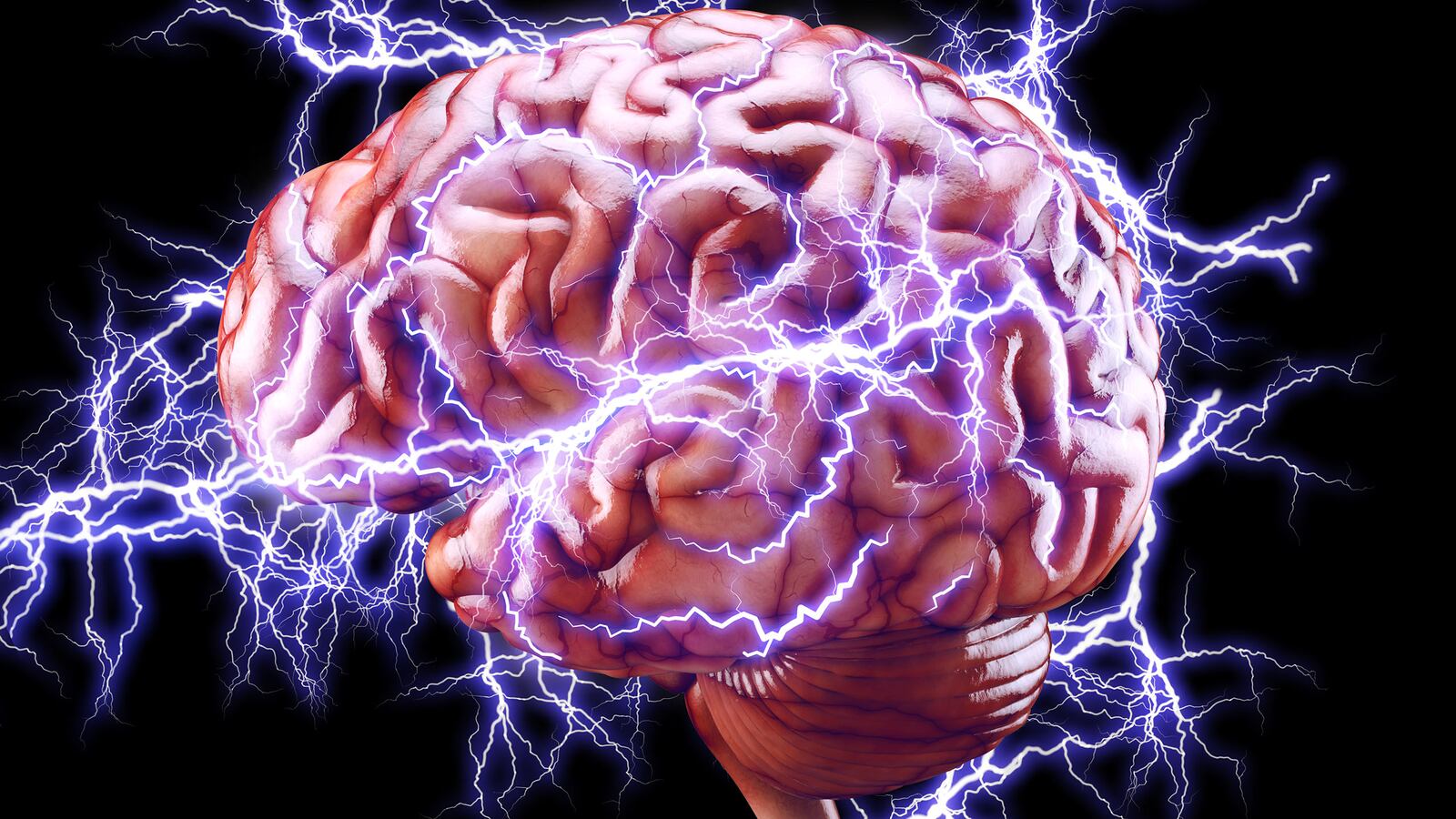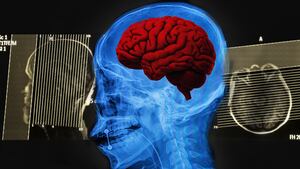A headset that sends electricity through your brain as you sit on the sofa at home doesn’t sound like the most obvious—or safest—immediate treatment for depression.
But Swedish company Flow Neuroscience has created exactly this, and they plan to launch it in Europe next year. The therapy is called transcranial direct current stimulation (tDCS), and involves attaching two electrodes to either side of one’s forehead, usually on a headband to keep them in place, sending a very weak electrical signal through the brain. It’s been touted as a way to treat depression, anxiety, chronic pain, and more.
What is Flow? from Flow Neuroscience on Vimeo.
Flow isn’t the first wearable to use tDCS for depression. South Korean startup Ybrain’s Mindd tDCS headband is already available in hospitals around Seoul. And New York-based Soterix has a tDCS treatment that is approved for depression in Europe. In the US there are no FDA-approved tDCS devices for treating depression, but doctors can still choose to use tDCS for depression as an “off-label” treatment.
If approved, however, Flow will be the first tDCS headband that someone can buy online and use to treat depression in their own home, without a prescription or the supervision of a doctor.
Flow uses 2 milliamps (mA) of electrical current, approximately 10 times less than the amount it takes to power a 30-watt light bulb for 30 minutes at a time over a six-week treatment course. The brain stimulating headset comes with an app designed to coach patients through behavioural changes known to help with depression. For instance, it might prompt you to go for a walk after dinner that day, or go to bed an hour earlier that night. The app will take into account what you’ve already achieved when setting new challenges. Patients will be asked to confirm that they’ve been diagnosed with major depressive disorder before they can buy.
The device is currently awaiting approval from the British Standards Institution, the agency charged with analyzing product safety in the U.K. The company hopes to launch it in Europe in January, with a global launch to come later.
Daniel Mansson, co-founder of Flow Neuroscience, says the aim of tDCS is to balance the activity in an area of the brain called the dorsolateral prefrontal cortex. “It gets the neurons in the brain on the left side to get a little bit more activated and on the right side they get a little bit less activated,” he says.
It’s based on the idea that, on average, people with depression have lower electrical activity on the left side of the frontal part their brain. Applying low levels of electricity to the left side of the brain isn’t thought to cause neurons to fire, but is enough stimulate background activity.
Mansson admits that this is a simplified explanation, and that we don’t understand exactly how this treatment works—but the same could be said of many medications. Either way, he believes “we are now at the point where the literature and the scientific studies are large enough and good enough to prove that it actually treats depression.”
Aside from whether it works, there’s also the question of whether someone should be able to buy a headset to use at home—without the guidance of a doctor.
Using tDCS is not like just popping a pill. If the electrodes are not in the right place, says Marom Bikson, a professor of biomedical engineering at The City College of New York, and co-founder of Soterix, “they might not be over the right brain regions, and if they're not over the right brain regions you may not be producing the right effects.” In a hospital or research lab, people are trained to position electrodes correctly. At home, you’re on your own.
“A technology that's working in a hospital, if you bring it home, if you don't modify it, maybe it won't work the same and so it maybe won't do anything,” says Bikson.
So does tDCS work for depression? A 2016 paper in the British Journal of Psychiatry analyzing individual patient data from several trials found that tDCS had mixed results, but that its effectiveness was comparable with antidepressants. A randomized control trial published earlier this year in the journal Brain Stimulation found that tDCS was no better than sham treatment for depression, but acknowledged that the low-level current in the sham version may have had some effect.
In short, the evidence—while promising—is somewhat mixed.
Sarah Lisanby, director of translation research at the National Institute of Mental Health, told the Daily Beast via email that “We have insufficient knowledge about safety and efficacy at the present time to support clinical use of tDCS for depression treatment. However this remains an active area of study.”
If anything, Lisanby said, tDCS is ripe area for further research. “New trials underway will provide important evidence to address the yet unanswered questions of whether it works and for whom and at what dosage,” she said.
Bikson added:“There is a lot of evidence that tDCS can assist with depression. But there are valid voices that are going to be calling for more research: ‘We want to see stronger evidence, we want to see more trials.’”
Advocates of tDCS don’t necessarily want it to replace antidepressants or talking therapies for depression, but instead to give people, especially those that struggle with side effects or can’t access traditional therapy, an additional option. “We're trying to add a tool in the toolbox that's pretty small at the moment,” says Mansson.
For others it might work best as an add-on. “tDCS is often perceived as something that can make other therapies more effective,” says Bikson. “It's sort of like an oil or grease for the brain.”






